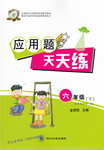题目内容
Say (suppose) you are a 17th century construction worker who’s worked long and hard to build a splendid tower for the dead wife of your emperor.
Now say that the emperor orders your fingertips cut off so you can never build another one. Yes, that is the Taj Mahal, one of the most famous buildings in the world. And the tale behind the construction is just as impressive as the building itself.
First, there’s the emperor of northern India, Shah Jehan, also called the King of the World. In 1612, Shah Jehan married Mumtaz Mahal. Madly in love, they had 14 children over the next 20 years. But then sadness came. As Mumtaz was about to give birth to child number 14, she said she had heard her unborn baby cry out. It was a sign of death. And as Mumtaz lay dying, she asked Jehan to build a lasting memorial (纪念物) to celebrate their love.
When the heartbroken Jehan appeared eight days after his wife’s death, his people were shocked to see that his coal-black hair had turned snow-white.
Putting away his sadness, Jehan ordered his wife’s dying wish carried out. More than 20,000 workers labored nearly 22 years to complete the construction. In 1653, Jehan placed Mumtaz’s remains (遗体) in the center under the building.
And then, son number five, Aurangzeb, murdered his brothers and took over the power from his aging father. Jehan lived the rest of his days - eight years, to be exact - imprisoned not far from the Taj Mahal. Jehan was only allowed to climb onto the top of his prison to see the timeless treasure from a distance. But never again would he be allowed to visit it-until he was buried next to his wife.
Today 25,000 people visit the Taj Mahal each day. Though the reason for building the tower was a strange, sad story, those who see its breath-taking beauty are reminded of the happiness that inspired (激发……的灵感) its construction.
1.The first two paragraphs were written to show that ________.
A. the Taj Mahal is an unusual historic building
B. ancient Indian emperors were cruel
C. construction workers led a hard life in ancient India
D. India has some of the most famous buildings in the world
2.The Taj Mahal was first built as ________.
A. a prison B. a gift to Mumtaz
C. a memorial building D. a tourist attraction
3.We learn from the text that Mumtaz probably died in ________.
A. 1626 B. 1632 C. 1634 D. 1653
4.The underlined word “happiness” in the last sentence refers to ________.
A. the married happiness of the emperor and his wife
B. the great pleasure Jehan once found in exercising his power
C. the happiness Jehan felt on completing the Taj Mahal
D. the pleasure tourists experience when visiting the Taj Mahal.
1.A
2.C
3.B
4.A
【解析】
试题分析:文章写了一位建筑工人,印度的皇帝和他的妻子的故事,为了纪念他的妻子,而建造了这个建筑物。
1. B是以偏概全,CD偏离了本文中心,故选A。
2.
3. 细节理解题。1653-21(nearly 22years,所以不到2 2年)=1632,故选B。
4.
考点:考查生活故事类短文阅读

 应用题天天练四川大学出版社系列答案
应用题天天练四川大学出版社系列答案